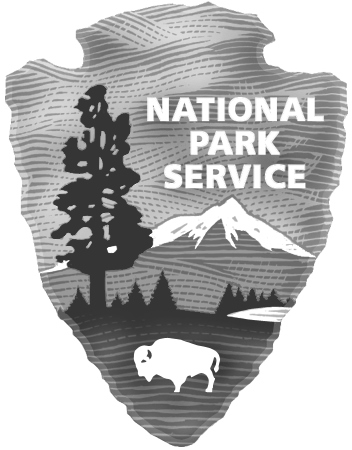This is a Project Based Learning Lesson designed to have students question how we decide what places deserve preservation and argue for the addition of a landmark to the National Register of Historic Places. Through the lesson, students should explore applications to the National Register of Historic Places and determine the rhetorical strategies and devices used by the author(s) of the applications to convince the audience that the location deserves the protections of the list.
The Language of Preservation: How Words Aid in Saving Cultural Icons
The Language of Preservation: How Words Aid in Saving Cultural Icons

Location
Type of Landmark
Topics
Learning Objectives
- Students will be able to understand how the argument for preservation is crafted by reading and annotating texts about preservation.
- Students will be able to craft an argument composition in which they successful argue for the creation of a cultural landmark by developing knowledge about written composition and the language of preservation.
Materials
- Criteria for Inclusion in the National Register of Historic Places
- Applications for Inclusion in the National Register of Historic Places
- Tom Mayes, "Why Do Old Places Matter"
- Explanation of the Statement of Significance by the National Trust for Historic Preservation.
- National Register Rap
- Computers, or other devices with access to the internet.
Suggested Instructional Procedures
Day 1:
1) Introduce the National Register of Historic Places using this Rap
2) Whole Group Discussion – Potential Questions
- Should we save old buildings? Why or why not?
- How criteria should we use to decide whether or not to save a building/site?
- What places in American do you think might already be on the National Register of Historic Places?
3) Have students RAP the criteria list for the National Register of Historic Places
RAP - Read each paragraph; Ask (and attempt to answer) 2 questions; Paraphrase the main idea and two supporting details
Day 2:
1) Revisit the criteria list and discuss what each criterion means.
2) Group Activity: Randomly assign groups of students and assign major landmarks for them to evaluate:
- Mount Rushmore
- The Statue of Liberty
- The Liberty Bell
- The White House
- The 9/11 Site
- The Lincoln Memorial
Students should decide if the landmark meets the criteria.
3) Student groups should share out their landmark and which of the criteria qualifies the landmark
Day 3:
1) In the same groups as the previous day, have students read and discuss the Introduction to Tom Mayes’ “Why Do Old Places Matter.” Students should annotate text as they read. Student should highlight Mayes’ claim and the specific evidence he uses to back up his argument. Students should discuss the effectiveness of the argument and the rhetorical strategies and devices that Mayes uses
2) Using evidence from the National Register Criteria, Mayes’ article, and their knowledge of an old place within their community, students should compose a paragraph where explain the necessity of keeping their “old place’ for future generations.
Day 4+:
1) Model reading and annotation of History essay from Mayes’ series “Why Do Old Places Matter”. As you read aloud, share how you would annotate the text and why those specific elements are important.
2) Group students based on similarities of landmarks written about in the previous day’s activity. Students should stay in these groups for the remainder of the unit.
3) Each group should create a Google Doc to track their work; all students should contribute to the Doc:
- Choose a place within the state that should be preserved
- Find at least 3 images of the place
- Research the history of the place (from credible sources)
- Evaluate the place based on the National Register Criteria
Day 5:
1)_ Jigsaw Activity with articles - (not all students should read every article; then they have to work together and rely on the knowledge of each other)
Student should highlight Mayes’ claim and the specific evidence he uses to back up his argument. Students should discuss the effectiveness of the argument and the rhetorical strategies and devices that Mayes uses.
2) Groups will reconvene and discuss how the place they chose previously does or does not meet the standards set forth in Mayes’ essays.
Consider:
- How does meeting these qualifications help argue that a site should be preserved?
- Does the failure to meet one of Mayes’ qualifications disqualify a site? If yes, why? If no, why not and what would?
- How valid are Mayes’ claims?
3) Groups should record the highlights of their conversation on their Google Doc.
Note: It is recommended that teachers use bell ringer time, homework assignment, and/or extra class time and different grouping strategies to allow students to interact with other texts from Mayes’ blog series.
Day 6:
1) Host a Socratic Seminar that starts with the questions you asked at the beginning plus one (or more) new ones
- Should we save old buildings? Why or why not?
- How criteria should we use to decide whether or not to save a building/site?
- Why is the criteria created by the class different from the criteria of the National Register?
- Other questions that arise during class discussion
2) Assessment: (Provide suggestion for activity in which teacher can measure if student has achieved standards. Include a rubric)
Days 7-10+:
1) Groups should craft an application for the inclusion of a local landmark or a landmark from their hometown into the National Register of Historic Places. Students can view approved applications for the state of North Carolina here.
Applications could include – Official Application may be downloaded from the National Park Service in a Microsoft Word Format:
- Name of site
- Location and Address of Site
- State Agency Certification (For this exercise, the teacher should sign here)
- National Park Certification
- Classification
- Function or Use (both historical and current)
- Description (both a summary and a longer narrative)
- Statement of Significance (Criteria from Day 1 and an explanation of significance)
- Major Bibliographic References
- Geographical Data
- Any Additional Documentation
The expectations of the applications could be easily modified for use depending on the abilities of students and the time that can be spent working on project. The most important sections to assess writing are 1, 2, 7, 8, and 9.
Vocabulary
Transcendent: To move beyond the bounds of someone's or something's existence.
Distinction: Importance, excellence or achievement.
Commemorative: Intended to honor an important event or person from the past
Historical Integrity: To be as true to the actual events of the past as humanly possible.
Funerary: Of, used for, or associated with burial.
End of Lesson Assessment
Rubric for evaluating National Register applications included here. Also for those teaching AP Classes, students may also be asked to craft an argument essay in which they argue which qualities or traits render it necessary to preserve a location. This essay would be graded on the 1-9 AP Rubric.
Subject
Grade Level
Duration of Lesson
Standards/Eligible Content
Common Core Standards
Author
Stephanie Harris, High School Teacher, North Carolina.
Funders/Sponsors
Cultures of Independence has been made possible in part by a major grant from the National Endowment for the Humanities: Celebrating 50 Years of Excellence
Any views, findings, conclusions, or recommendations expressed in this website or during the institutes, do not necessarily represent those of the National Endowment for the Humanities.
Additional funding is being provided by Wells Fargo through HEAD for the Future, its partnership with HSP, and by Independence National Historical Park.


Attention Teachers!
Let us know how you used this plan and be featured on our site! Submit your story here.
